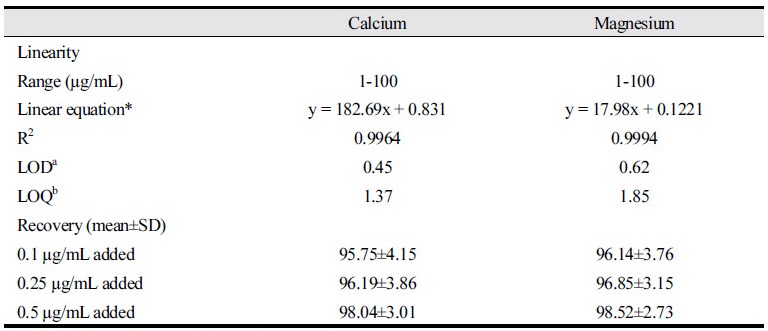Abstract
The purpose of the study was to investigate the effect of calcium concentration in saliva on dental caries activity after consuming calcium.A total of 59 adult women aged 20 to 40 years were surveyed for calcium intake. The daily average calcium intake was analyzed through dietary records of the subjects. The subjects were divided into two groups based on daily average calcium intake. Salivary pH and concentrations of minerals in the saliva were obtained from A group and B group. Calcium (Ca2+)) and magnesium (Mg2+) concentrations in saliva were measured by HPLC-Ion chromatography using 15 mM sulfuric acid. The dental caries activity test was quantified by salivary buffer capacity test and plaque pH test. The mean Ca2+ concentrations of A group was 12.75 μg/m, the mean Ca2+concentrations in the B group was 16.30 μg/mL (p<0.05) and respectively, Mg2++ concentrations were found to be 0.48 μg/mL and 0.51 μg/mL. Calcium intake and calcium concentration in saliva showed a significant correlation (r=0.380). The mean Ca2+ concentrations in saliva was higher in the high calcium intake group. Therefore, calcium intake in saliva was correlated with dental caries.
Figures & Tables

Table 1. Linear range, linear equation, correlation coefficient (r), LOD, and LOQ for calcium and magnesium


